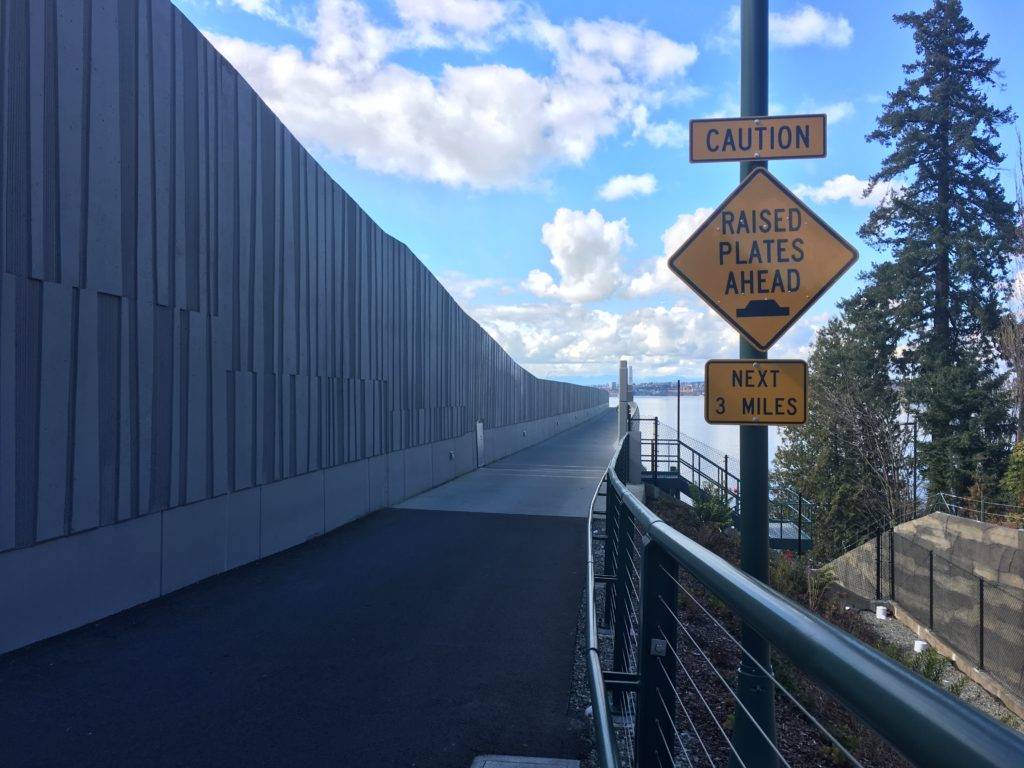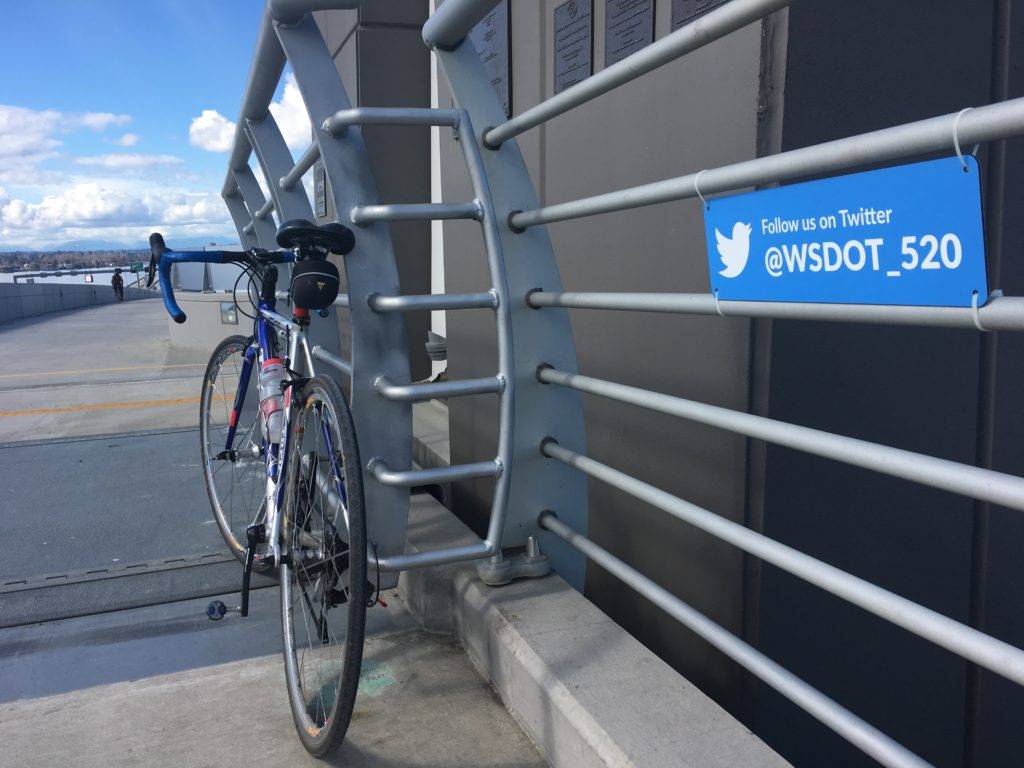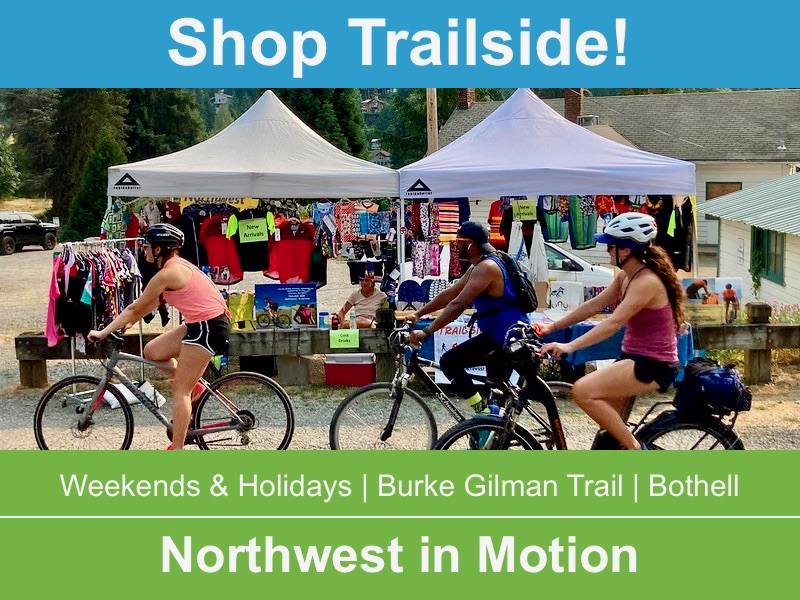One of the most exciting new developments in regional transportation alternatives has been the multi-use trail on the new Hwy 520 Floating Bridge across Lake Washington. The trail opened on December 20 and has had more that more than 70,000 trips to date. The new trail significantly shortens bike commutes between the east side and Seattle, and enables new route options for walkers, runners, and cyclists.

In contrast to I-90 trail, which seems like it was an afterthought, regional transportation advocates successfully lobbied for the 520 trail. While it’s getting positive reviews because of the access it provides, quite a number of cyclists take issue with the raised metal expansion plates. The problem is that the bumpy ride is bone-jarring and unexpected given that the trail is brand new. Some of us predict injury or worse that is directly attributable to the design of the trail.

The Seattle Bike Blog, which advocates for regional transportation alternatives, has been covering the problem for over a year. Tom Fucoloro, Seattle Bike Blog’s producer wrote:
“I almost crashed when I hit the first plate. The trail is so new and smooth, I was sitting back with a comfortable grip on my handlebars looking out over the lake. When I hit the first plate, it packed a bigger punch than I was expecting, and I was barely able to keep my grip on the bars to keep from crashing. It feels like hitting a pothole.”

I checked with folks in my cycling network and got a range of responses about the expansion plates. Although almost everyone loves the improved access, I only got one positive comment at the favorable end of the spectrum:
Rob Snyder: “I think they are not bad at all. I have ridden over them on my gravel bike and my lightweight with 23c tires.”
On the unfavorable end of the spectrum:
Leslie Collins Barber: “I don’t think they considered bikes when installing those. I was unimpressed and stood up to cross each one.”
Rolland Waters: “They blew the expansion joints in their entirety. it’s a pretty big bounce if they catch you unawares. They should be painted bright orange.”
Team Audi bike racer Yee Feng says “I hate them. Plus, people at my office who are considering bike commuting are worried about them.”
So, the reputation of the expansion plates seems to be discouraging at least some people to not bike commute, which defeats the purpose of the bikeway.
Lois Kepler Smith, who races gravel and mountain bikes, and is also a Cascade Bicycle Club ride leader, thinks of them as an opportunity to practice her bike handling skills: “I use them to practice bunny-hopping!”
To make things worse, early user feedback to WSDOT about the plates either resulted in no response, or as Tom Fucoloro noted, something akin to the kind of response you get from the cable company: “nothing’s wrong…we built it to spec!”

WSDOT has posted this on their website:
“In response to bicyclists’ concern that the cover plates create a bump when crossed, our engineers are studying whether the plates could be retrofitted or replaced with a thinner plate. In the meantime, we’ve added caution paint to alert path users as they approach each of the plates. In addition, we have added signs at each end of the floating bridge, alerting users to the upcoming bumps.”

Last I checked, the caution paint consists of faint lines on either side of each plate that you really can’t see until you are too close to the plates to slow down. There is an obvious warning sign on the downhill section on the east side of the trail, but I can’t find one on the west side.

I was able to set up an in-person meeting on the trail with Steve Peer, WSDOT’s Media and Construction Communications Manager. According to Steve the 520 floating bridge and trail have unique engineering challenges. It’s the longest floating bridge in the world, and as such there are no similar structures that could have been used as references. Since its floating, it moves in three dimensions. The pontoons are affected by the water level in Lake Washington, wind, and waves. Depending on conditions, the gaps between the pontoon sections can vary up to six inches.
But, in a region populated with vast numbers of folks whose jobs involve producing world class products, it’s a tough sell to say that the engineering challenges are too difficult to provide a smooth bike ride. Chad Miller, a product manager and regular bike commuter, noted that “WSDOT obviously didn’t do any end-user product testing. How hard would it have been to build a model and have cyclists try it out?” Steve admitted this kind of testing was not done.
When I checked with the Cascade Bicycle Club about their involvement, which was back in 2010, they said that their main focus was to simply get the trail built. No one was thinking about the possibility that a trail built to an ADA specification might not actually work for cyclists.
Incentives and Actual Behaviors
Another aspect is the actual behaviors of cyclists on the trail.
Almost every time I’ve ridden on the trail I’ve seen someone riding a bike with aero handlebars–the kind where the hands are positioned in an aerodynamic “tuck” position. In this position the rider has relatively poor control over the bike, which is fine if you are going straight on a relatively smooth surface. This kind of equipment is relatively difficult to use. The folks most likely to ride an aero bike on a crowded multi-use trail are probably the least-skilled with this kind of gear. (More experienced aero bike riders are more likely to find a lonely country road to ride with this kind of bike.) With the unexpectedly bumpy ride I think it’s only a matter of time before one of these riders gets launched and injured.
Almost every time I’ve ridden on the trail I’ve seen folks riding bike-share bikes on the trail. Sounds like a transportation activists dream, doesn’t it? Except when you see these riders on the trail they look unsteady, and barely able to maintain control every time they hit the plates.
While researching this post I also took a look at the top speeds posted on Strava. Strava is a website where cyclists and runners post their fitness data files, and then their speeds on different segments of roads and trails get stack ranked. The current fastest eastbound speed on the 520 is 27.9mi/h by a rider named Willy DJ. The current fastest westbound speed on the 520 is 34.3mi/h by Yee Feng. Services like Strava create incentives that I doubt were considered by the trail designers.

SR 520 Trail Celebration
As part of Bike Everywhere Month 2018, WSDOT is holding a 520 Day on Sunday, May 20 at 10:30 AM – 12:30 PM
Location: SR 520 Trail western trailhead, 2802 E. Park Drive East, Seattle 98112
The SR 520 Trail opened across Lake Washington last December and since then bicyclists and pedestrians have taken more than 70,000 trips on the trail. With warmer weather arriving, this is an opportunity to celebrate this milestone with an informal ribbon-cutting on “520 Day”! You’ll have a chance to cut your very own SR 520 Trail ribbon and enjoy a trip on the trail! And if you’re participating in the Washington Bikes 2018 Bike Everywhere Challenge, this is a perfect chance to explore the new trail and earn points for your team!

I believe the 520 is a major breakthrough for both commuters and people who ride for fun and fitness. When it opened last December, I decided to ride the “Bridge to Bridge” route going over on 520 and coming back on the I-90 trail. It is about 20 miles and features amazing views, several pleasant parks and a number of great spots to just stop and “smell the roses.” It is definitely one of my favorite new rides.
The expansion joint issue is a major problem. The first time I hit one, I was shocked at how jolting it was. However, now that I know what to expect it is not as bad. Still, there has to be a better design solution. It would be great to know who we need to contact to ask for changes.
Let’s Ride!